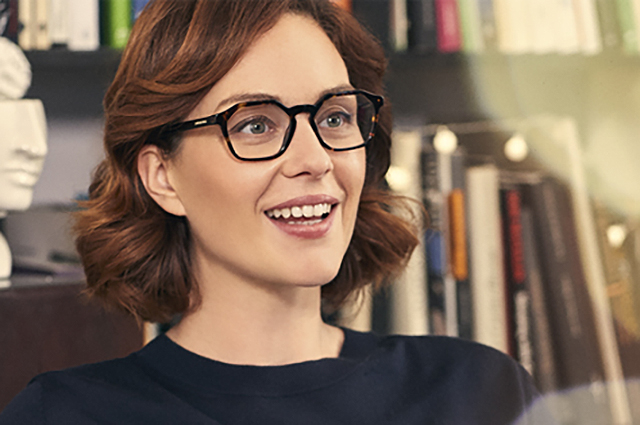Picking out glasses can be a bit overwhelming. With so many brands, styles and customizations available to choose from, you could spend hours looking at and trying on different options. Round and square, big and small, polarized and progressive – where do you begin?
Finding the perfect pair starts here.
See an Eye Doctor
The first step is to visit your eye doctor for a regular check-up to determine your prescription. AAA members can get 30% off eye exams at participating LensCrafters locations. While you’re there, you can also talk to your eye doctor about what types of glasses you should wear.
Consider Your Lifestyle
Choosing the right glasses is about more than just how they look, it’s about how you live. Keep these important questions in mind when you are shopping.
What do you do from day to day? If you spend most of your days in front of a computer or other digital devices, you will need a different type of lens than if you spent most of the day working or being active outside. You might want to consider blue light filtering lenses.
Do you have a special eye condition? Whether you have astigmatism or another condition that affects your vision, choosing the best lenses and frames can potentially help to alleviate your symptoms.
Find the Right Prescription Lens for You
The next step is to determine the kind of lens that will help you feel and see your best. Your eye doctor or an optician can talk with you about the various prescription lens types available, but here’s a quick introduction to some of the most common options.
Single vision – The most common type of lens, single vision lenses are usually prescribed to correct eye conditions such as nearsightedness, farsightedness and astigmatism.
Progressive – With two or three focal points in one lens, progressive lens can help you see no matter the distance without needing to switch out your glasses. The two most common progressive lenses are bifocals and trifocals.
Bifocals – These lenses do double duty, giving you close-up lens power for reading, texting and close detail work while also improving your distance vision. You don’t have to get the traditional lenses with a line; lineless bifocals are available that can transition from near to far.
Trifocals – Featuring three focal points in one lens, trifocals help you to see close-up, mid-range and far away.

Frame Your Face
The key to looking your best in glasses and making sure they fit securely is to determine which frames best compliment the shape of your face. Most faces are either circle-, oval-, heart- or square-shaped. An in-store optician will help you to narrow down compatible pairs of glasses for your face shape.
Find a LensCrafters store near you or find your look virtually on LensCrafters.com.
Square – Round, oval, cat eye, butterfly and semi-rimless frames complement broad jawlines and foreheads.
Heart – Light-colored frames with thin temples (also known as the arms of eyeglasses) or exaggerated bottoms go well with this shape, complementing the narrow chin, visible cheekbones and broader forehead.
Oval – Most frame shapes go well with this wide shape, but the most complementary match is typically rectangular.
Round – Horizontal and rectangular frames go best with this facial shape.
Enhance Your Vision
After picking out the lens type and frames best for you, the next step is to modify your lenses, so you can see the way you want while going through your day. There are different enhancements for all sorts of activities.
Premium AR – Short for premium anti-reflective, this enhancement diminishes reflections to make tasks such as driving in the dark much easier. Premium AR can also repel dirt and oil so that your glasses are easier to clean.
Polarization – If you spend a lot of time outdoors, polarized lenses are your best bet for seeing clearly. This type of enhancement minimizes glare from the sun and provides UV protection, so you won’t be squinting while doing outside work. Polarized lenses also work to make colors crisp and details more vibrant in the sunlight, perfect for jobs that require doing detailed work outdoors.
Photochromic – This enhancement changes the lenses from clear to dark when going from indoors to outdoors and vice-versa when coming in from the outdoors to indoors. They adapt based on the amount of brightness detected, so this type of lens is also great for reducing eye fatigue and strain.
How do your eyeglasses complement your style? Tell us in the comments.
AAA members can get 50% off lenses with a frame purchase from LensCrafters, plus more exclusive savings on exams, frames and more.

















